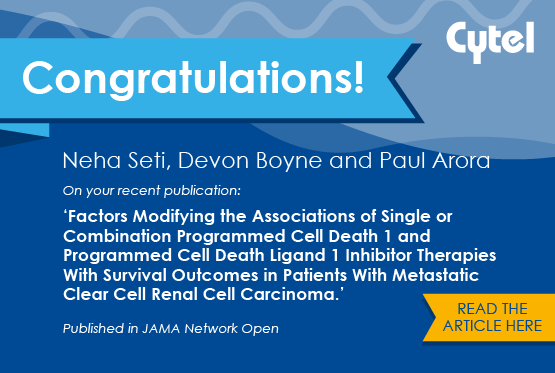Recent years have witnessed improving survival outcomes for those struggling with a range of common kidney cancers. Scientists at Cytel recently published findings aiming to identify those baseline factors which influence a positive response to an established therapy. Such an investigation is critical to ensure that future treatment is informed by biomarker driven strategy.
PD-1 and PD-L1 inhibitors are a treatment often used for metastatic clear cell Renal Cell Carcinoma (ccRCC). The paper, published in the Journal of the American Medical Association (JAMA) in 2021 looks at several factors that can ultimately effect responses to a common therapy for kidney cancer including age, PD-L1 expression, sacromatoid differentiation and MSKCC risk score.
The meta-analysis utilized 9 publications across 6 trials, chosen from an initial search of 662 clinical studies, to identify which factors improve survival rates amongst patients given such therapies.
Study responses were pooled using a random-effects meta-analytic model to overcome complexities of such subgroup-level analyses within the individual trials studied. Unlike in a fixed-effect model where scientists can assume a common treatment effect across studies, a random-effects model allows for the assumption that treatment effect might vary by trial. This can better enable a data pooling effort to account for heterogeneity amongst datasets, where different populations under study require accounting.
As it turned out this methodological precaution was of limited necessity as there was little to no heterogeneity between the trials under study. Further sensitivity analyses were performed using fixed-effect models.
Learn more about the findings of this study by clicking below.




